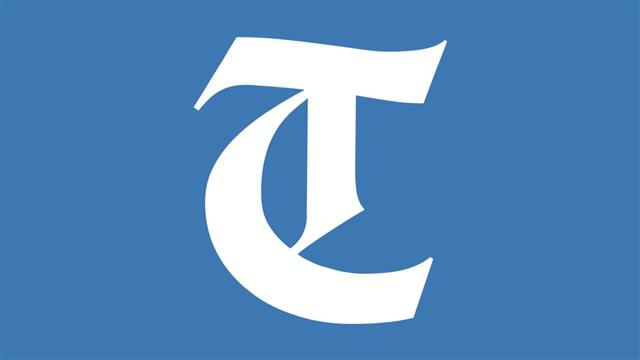Punjab addicts hooked on cheap treatment drug at govt rehab centres, open market
Ruchika M Khanna
Tribune News Service
Chandigarh, August 9
That the drug menace in Punjab is “deep-rooted” appears evident from the fact that addicts undergoing treatment in the state have got hooked on the very drug that was being used to wean them off habit-forming opium, poppy husk or heroin.
Buprenorphine, the drug, is part of the state government’s oral substitution therapy (OST) available to a large number of addicts visiting various rehabilitation centres across Punjab. Though meant only for government-run centres, the drug is learnt to have illegally found its way to the open market.
In such circumstances, say experts, it won’t be wrong to say the government’s ambitious de-addiction drive has boomeranged. Buprenorphine not only gives the addicts almost-the-same high that they get from heroin or other opiates, but the drug comes quite cheap when compared to narcotics. A buprenorphine tablet costs Rs 7.34 whereas one gram of heroin is available around Rs 1,500 to Rs 3,000.
Claims come to naught
Citing a decline in the seizure of synthetic drugs as well as a fall in occupancy rate at de-addiction centres, the government had of late been patting itself on the back claiming “the drug menace had been curbed”. But an investigation by The Tribune over the past one month has found the situation to be contrary: the “previous drug menace” has paved the way for “prescription drug menace”.
Ravinder (name changed) of Chola Sahib near Tarn Taran, under-treatment at an OST centre, says to begin with, doctors gave him 9 mg of buprenorphine daily. “After more than three years, I am still taking 5 mg per day. The tapering off buprenorphine has been quite slow in my case… I am still an addict — only the substance has changed,” he says.
Easy substitute
Another patient claims that a large number of addicts visit OST centres in pursuit of buprenorphine when they are unable to procure heroin. “If a person consumes two grams of heroin daily, he will have to spend around Rs 2,600. But here, he will an equal kick at a mere Rs 10,” he says.
But Romesh Mahajan, project director at Red Cross de-addiction centre on the Babbehali Road in Gurdaspur, says the drug has been found to be very effective against heroin. “The need of the hour is counsellors should be giving the drug (1 mg) five times a day for two days before reducing it to three times a day for next two days. After that, only one tablet should be given for three days. The treatment should be over in a week,” he says.
A senior police officer in Gurdaspur says, “We know the drug is now available in the open market. How it reached there is beyond our comprehension. I think some chemists are buying buprenorphine in bulk and then selling it to addicts. It is a hit among the youth."
Medics, pharmaceutical companies and health authorities contacted by The Tribune during it investigation admitted to the misuse of buprenorphine over the past two years. A pharma manufacturer based in Mohali says he even though of manufacturing it once, but dropped the idea after realising why its sales have gone so high.
Marginal profit
As certain private psychiatrists have been issued sale licences by the health department, some cases of hoarding of the drug and then its supply to addicts for a small profit have been reported over the past six months.
Dr Satyen Sharma, a psychiatrist in Patiala and secretary, Punjab and Chandigarh branch of Indian Association of Private Psychiatrists, in an email interaction, said some misuse of buprenorphine may have been reported during initial treatment, “but thing are under control post new rules governing the de-addiction centres being implemented”.
“The drug department conducts regular checks and records are maintained down to every single tablet,” he says.
Though some experts feel buprenorphine should be given only in “controlled situations” to indoor patients to check its misuse, Dr Sharma claims extra dose does not produce a high when taken orally since the drug is only a partial ‘opioid agonist’, not complete like heroin or opium.
Drug op gone ‘wrong’
A senior member of the Drug Advisory Board says the fight against drugs seems to have gone haywire. “It was supposed to be launched in a phased manner. In the first phase, the idea was to divert injectible drug-users to buprenorphine. But its unchecked sale in open market led to its misuse,” he says.
Senior officials in the health department maintain that buprenorphine and fixed dose of naloxone are “wonder drugs” to treat addiction. “The possibility of some addicts acquiring it from OST centres can also not be ruled out,” says a medical officer in Gurdaspur.
Vini Mahajan, Principal Secretary, Health, says they have been very cautious in regulating drug dosage, and that “tapering off patients from this drug is clearly prescribed to OST centres”.
(Inputs by Ravi Dhaliwal in Gurdaspur and Manmeet Singh Gill in Tarn Taran)
In numbers
- 31De-addiction centres in Punjab
- 5 Tertiary care centres (Jalandhar, Patiala, Bathinda, Amritsar and Faridkot)
- 8 Centres in model jails (Amritsar, Gurdaspur, Kapurthala, Ludhiana, Patiala, Bathinda, Faridkot and Ferozepur)
- 70 Private de-addiction centres
- 18,770 Admissions in de-addiction centres in 2012
- Cost of running a de-addiction centre: Rs 1 cr per annum









